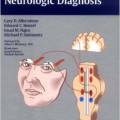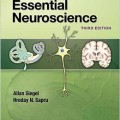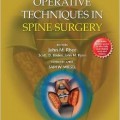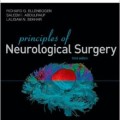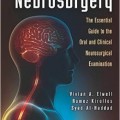دانلود کتاب ساختار مغز و ریشه های آن
Brain Structure and Its Origins: in Development and in Evolution of Behavior and the Mind
This introduction to the structure of the central nervous system demonstrates that the best way to learn how the brain is put together is to understand something about why. It explains why the brain is put together as it is by describing basic functions and key aspects of its evolution and development. This approach makes the structure of the brain and spinal cord more comprehensible as well as more interesting and memorable. The book offers a detailed outline of the neuroanatomy of vertebrates, especially mammals, that equips students for further explorations of the field. Gaining familiarity with neuroanatomy requires multiple exposures to the material with many incremental additions and reviews. Thus the early chapters of this book tell the story of the brain’s origins in a first run-through of the entire system; this is followed by other such surveys in succeeding chapters, each from a different angle. The book proceeds from basic aspects of nerve cells and their physiology to the evolutionary beginnings of the nervous system to differentiation and development, motor and sensory systems, and the structure and function of the main parts of the brain. Along the way, it makes enlightening connections to evolutionary history and individual development. Brain Structure and Its Origins can be used for advanced undergraduate or beginning graduate classes in neuroscience, biology, psychology, and related fields, or as a reference for researchers and others who want to know more about the brain.
Review
Brain Structure and Its Origins provides an evolutionary and very interesting perspective of the organization and function of the vertebrate nervous system from lamprey to man.
(Sten Grillner, Professor, Nobel Institute for Neurophysiology, Karolinska Institutet)
Brain Structure and Its Origins by Gerald Schneider is different from any other book on the topic. Its strengths lie in clear, comprehensive, and sometimes provocative explanations of the complex anatomy and functions of the brain, combined with a historical view of the field and the people who developed it. The great variability in how brains are organized and function across species is included and explained in terms of modes of brain development and evolution. Each chapter makes you want to learn more; chapters are followed by suggested readings that range from early landmark studies to the best of recent reviews. This is the book that would best introduce students at any level to the exciting field of neuroscience, and serves as an excellent review for the experienced investigator.
(Jon H. Kaas, Distinguished Centennial Professor of Psychology, Vanderbilt University)
This is a well-written general book on brain anatomy and function, which includes numerous useful pictures and clear diagrams to explain brain organization in terms of development, evolution and function. It is not only valuable for students interested in the field, but also for neuroscientists and neurologists in general.
(Javier DeFelipe, Neuroscientist, Cajal Institute)
About the Author
Gerald E. Schneider is Professor of Neuroscience in the Department of Brain and Cognitive Sciences at MIT.
Contents
PART I: INTRODUCTORY ORIENTATION
۱ Getting Ready for a Brain Structure Primer 3
۲ Methods for Mapping Pathways and Interconnections That Enable the Integrative Activity of the CNS 29
PART II: THE CENTRAL NERVOUS SYSTEM, FROM INITIAL STEPS TO ADVANCED CHORDATES
۳ Evolution of Multicellular Organisms with Neuron-Based Coordination 55
۴ Expansions of the Neuronal Apparatus of Success 67
PART III: INTRODUCTION TO CONNECTION PATTERNS AND SPECIALIZATIONS IN THE EVOLVING CNS
۵ The Ancestors of Mammals: Sketch of a Pre-mammalian Brain 89
۶ Some Specializations Involving Head Receptors and Brain Expansions 107
۷ The Components of the Forebrain Including the Specialty of the Mammals: The Neocortex 117
PART IV: DEVELOPMENT AND DIFFERENTIATION: SPINAL LEVEL
۸ The Neural Tube Forms in the Embryo, and CNS Development Begins 139
۹ The Lower Levels of Background Support: Spinal Cord and the Innervation of the Viscera 153
Intermission: The Ventricular System, the Meninges, and the Glial Cells 175
PART V: DIFFERENTIATION OF THE BRAIN VESICLES
۱۰ Hindbrain Organization, Specializations, and Distortions 181
۱۱ Why a Midbrain? Notes on Evolution, Structure, and Functions 205
۱۲ Picturing the Forebrain with a Focus on Mammals 217
۱۳ Growth of the Great Networks of Nervous Systems 235
PART VI: A BRIEF STUDY OF MOTOR SYSTEMS
۱۴ Overview of Motor System Structure 265
۱۵ Descending Pathways and Evolution 283
۱۶ The Temporal Patterns of Movements 299
PART VII: BRAIN STATES
۱۷ Widespread Changes in Brain State 311
PART VIII: SENSORY SYSTEMS
۱۸ Taste 325
۱۹ Olfaction 333
۲۰ Visual Systems: Origins and Functions 355
۲۱ Visual Systems: The Retinal Projections 371
۲۲ The Visual Endbrain Structures 393
۲۳ Auditory Systems 417
PART IX: THE FOREBRAIN AND ITS ADAPTIVE PRIZES: A SNAPSHOT
۲۴ Forebrain Origins: From Primitive Appendage to Modern Dominance 449
PART X: THE HYPOTHALAMUS AND LIMBIC SYSTEM
۲۵ Regulating the Internal Milieu and the Basic Instincts 467
۲۶ Core Pathways of the Limbic System, with Memory for Meaningful Places 483
۲۷ Hormones and the Shaping of Brain Structures 501
۲۸ The Medial Pallium Becomes the Hippocampus 513
۲۹ The Limbic Striatum and Its Outpost in the Temporal Lobe 537
PART XI: CORPUS STRIATUM
۳۰ The Major Subpallial Structure of the Endbrain 561
۳۱ Lost Dopamine Axons: Consequences and Remedies 583
Intermission: Neurogenesis in Mature Brains 589
PART XII: THE CROWN OF THE MAMMALIAN CNS: THE NEOCORTEX
۳۲ Structural Origins of Object Cognition, Place Cognition, Dexterity, and Planning 595
۳۳ Basic Neocortical Organization: Cells, Modules, and Connections 617
۳۴ Structural Change in Development and in Maturity 645






























































